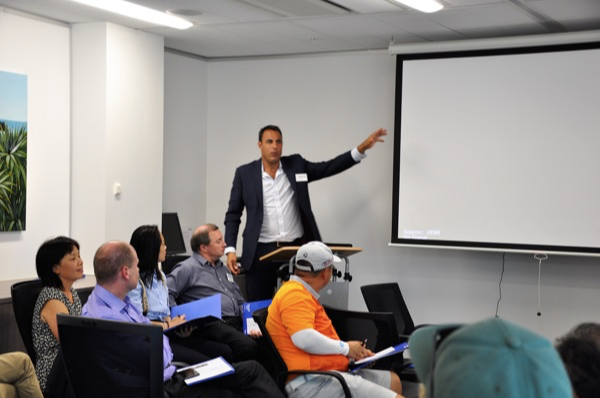Who are we ‘planning’ for?
Over the last two years I have given an Unitary Plan presentation in almost every nook of the Auckland region. The presentation sets out the changes to that have occurred to our planning system. Ultimately, I outline what may occur on sites and suburbs. There is often a collective gasp when I tell them that some neighbourhoods may have triple the number of dwellings. The crowds are often very uneasy that five level apartment buildings may go up around town centres without required parking.

Density requires all encompassing planning
Generally, there is an acceptance that additional housing is needed to meet the needs of a growing city. And that the community is better off with a range of housing types, sizes and prices to choose from. However, past fears of over-development among areas across Auckland may be justified. We are becoming used to seeing development put in place without the supporting amenity. Without the provision for schools and open space. If I take Whenuapai for example, rows and rows of dense development have gone up. This was previously farmland. Yet the dense developments have left no open space or facilities and a worsening traffic commute.
It has been a default position for the Council. Cash-strapped and all to oppose development in new areas where there was no infrastructure. We now have the opposite problem. A Unitary plan is now in place which has freed up development potential. Sadly this is not directly linked with an overarching infrastructure roll out. So if we look at Whenuapai where there are now a range of housing types to choose from. This has happened without underdevelopment, which is great. But there is infrastructure failure.
There has been no planning for connectivity, schools, community facilities or proper parks. It is haphazard. It would give people more confidence if the services and infrastructure met or exceeded housing growth. That is, it would be good if there was proper planning. Auckland is in catch-up mode because past planning policy has failed future generations. Many of who are still largely locked out of the Auckland housing market. Especially with our quarter-acre block obsession and our previous unwillingness to control or plan for urban sprawl.
Why isn’t our planning future focused planning?
The old Waitakere City developed a large swathe of Te Atatu North in the mid 1990’s. The Council took the lead by creating a model for urban development by setting up the roads, parks and walkways and left the developers to then build the houses. And as a result they now call the area Te Atatu Peninsula, a step up from the back water it once was.
We cannot live in a house on one hand and not give thought to the school, park or shopping and employment area. They must go hand in hand, and with more haste than we are used to. The Hobsonville Pt development, recently featured on The Block is another example where planning and infrastructure have been intertwined to create not only dwellings, but a decent place to live.
We need a base plan that makes development ‘paint by numbers’
We need development which is planned and can be applied to all urban conditions. One with a built environment diverse in use and population; scaled for the pedestrian yet capable of accommodating the automobile and mass transit; with a public realm supported by architecture and services that reflects the requirements of the area. Without this as a base plan we are just putting more people into the same area and not making the necessary changes to the heart of each area. These changes may be enough for right now, but in another 20 or 30 years when the population boom is unbearable we will be complaining about out lack of foresight.
No change without someone willing to foot the bill
While proper planning is part of the problem the bigger issue is the provision of infrastructure and the elephant in the room – which is who is going to pay for it. This issue is not new. Debt ceilings and limited scope for rate rises have been at the forefront of people’s minds as have the concept of infrastructure bonds.
But this inaction has gone on for long enough, so much so that the Chinese, who seem to do a good job of getting infrastructure built, are offering to build the Penlink. The 7 km connection bridging the Weiti river to connect the Whangaparaoa Peninsula to State Highway 1. It has been proposed for 40 years, while the population of the area has exploded. We are now told that 200 million dollars worth of government funds have been allocated to the proposal to be undertaken in the next 10 years.
We need it now, not in 10 years. Estimates are, the project will cost north of $400m, so who will pay for the other half of the project. Why is there so much inaction of what are pressing issues?
Delayed or non-planned infrastructure will curtail the supply of houses. It will only cause more frustration to people living in communities which were never planned for greater densities. A lack of co-operation between central and local government needs to change.

Leave a Reply
Want to join the discussion?Feel free to contribute!